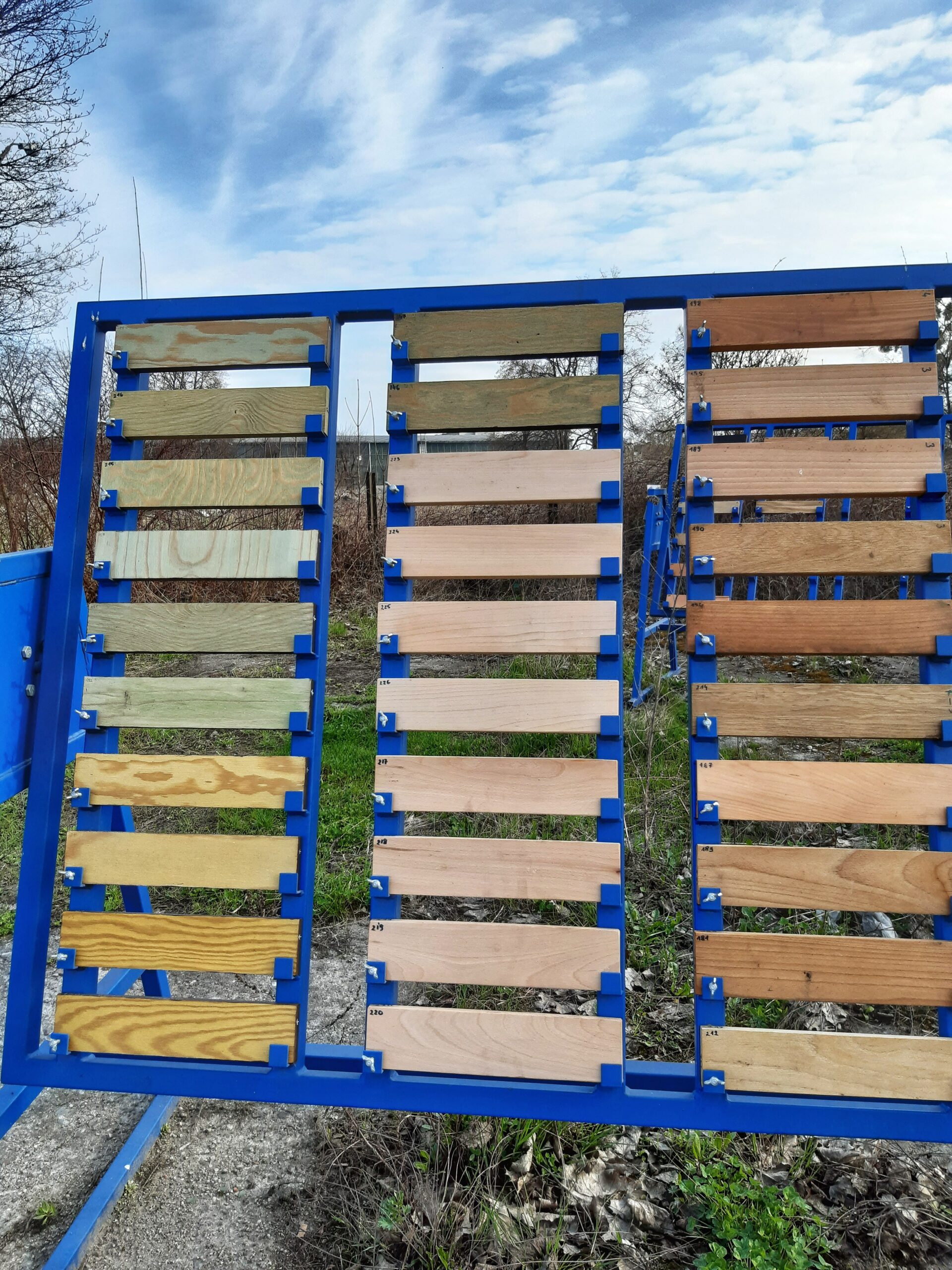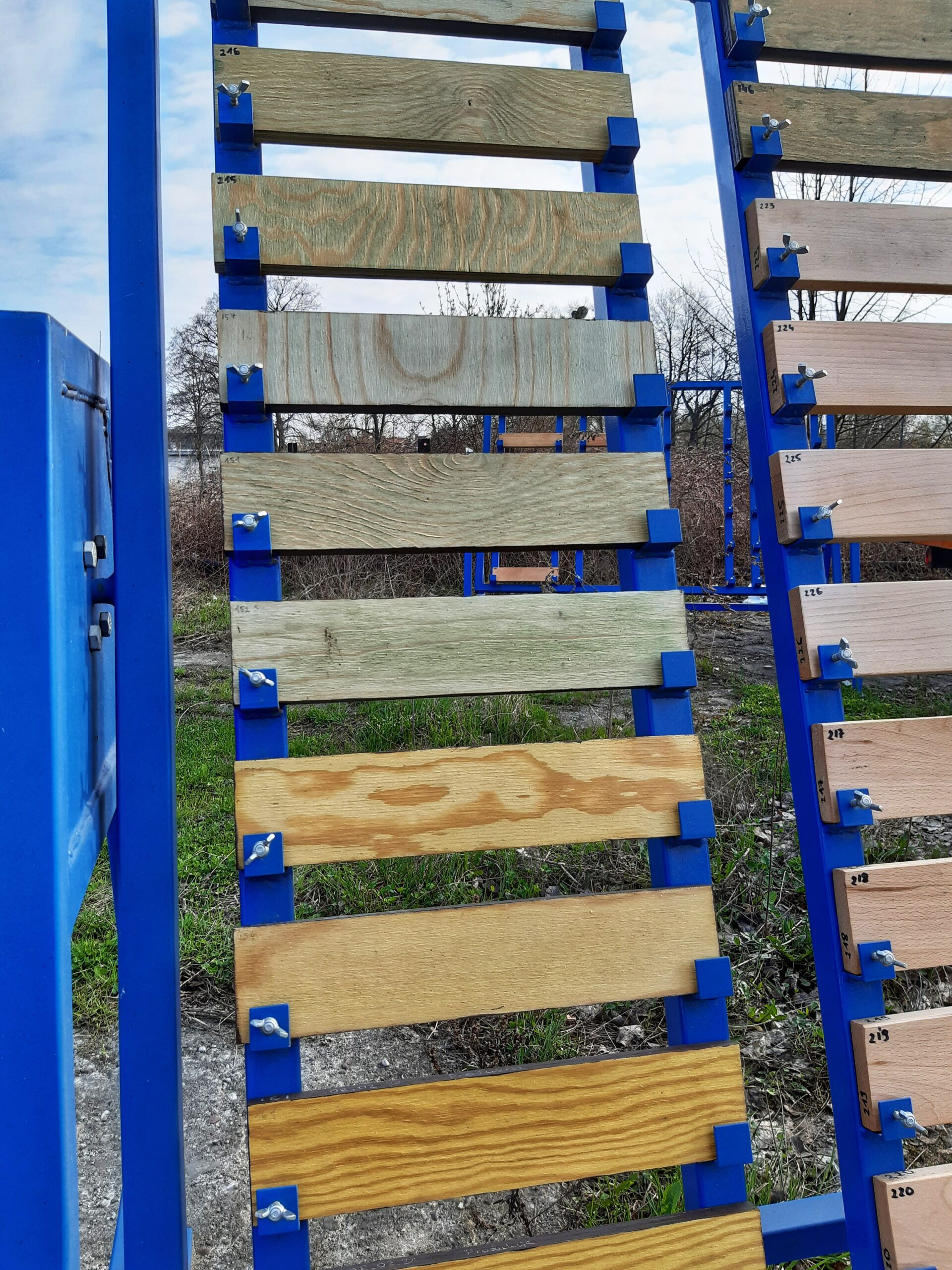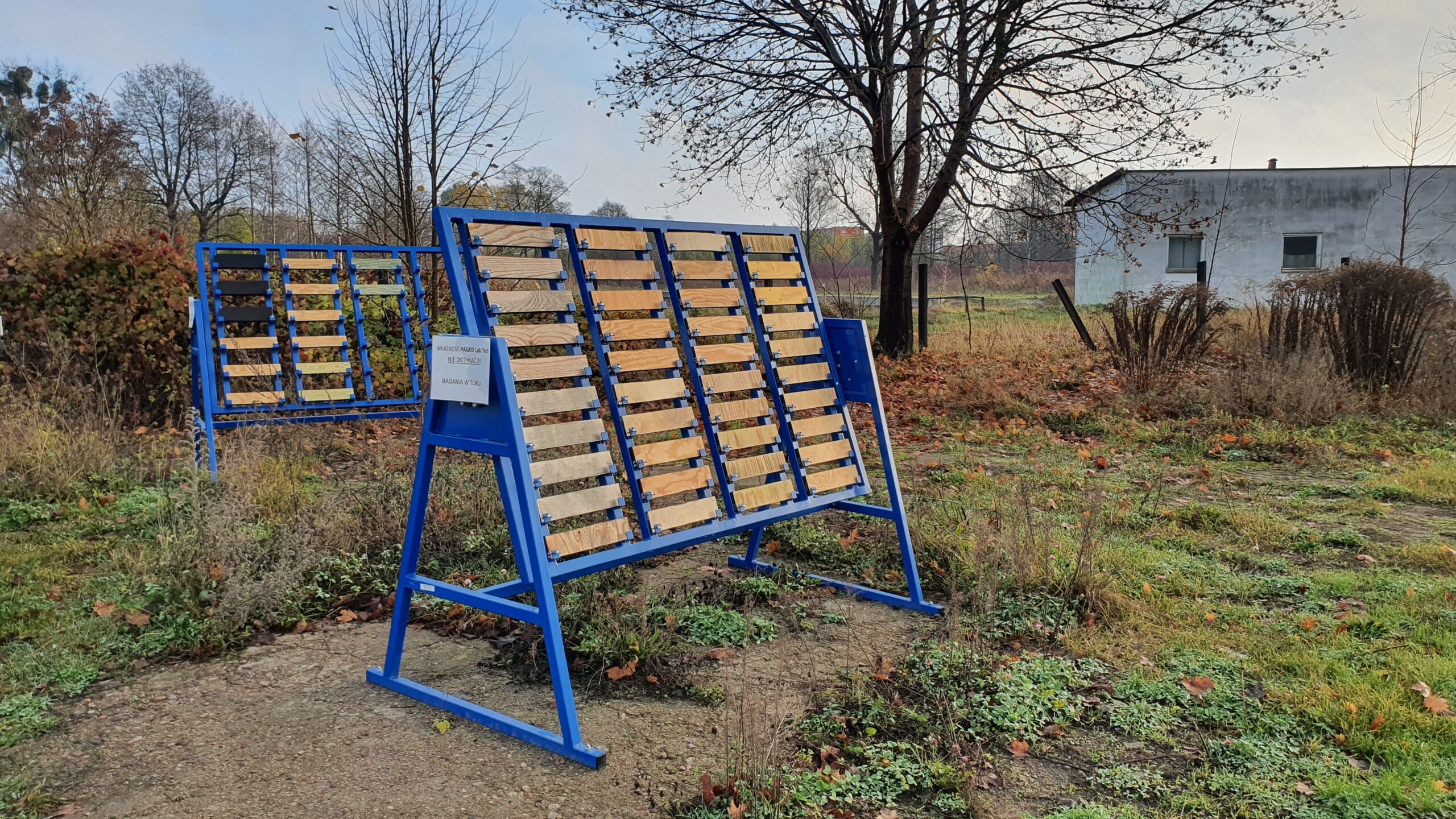Testing does not always take place in sterile conditions. Sometimes it is supposed to be quite the opposite. Sometimes we want to imitate the sun, heavy rain, wind and some samples of fauna and flora. All of this to study plywood behavior in natural conditions, with focus on such parameters as:
– cracking,
– peeling,
– discoloration,
– mold growth,
– gloss drop,
– adhesion.


The photo depicts our field station erected by Paged LabTech. This is how the tests of birch, beech, aspen, alder and pine plywood samples look like in natural conditions – own methodology based on the PN-EN 927-3 standard.
Typically, four samples are used for each test. Following sample preparation, three of them are fixed onto the field station, and one sample – a model one – is placed in the climate room. The arrangement of the racks is not accidental. They face south at an angle of 45°. Any evaluation or visual inspection of samples are made after 1, 3, 6 and 12 months.
Whenever we offer customers plywood for outdoor use, such a study becomes indispensable.

